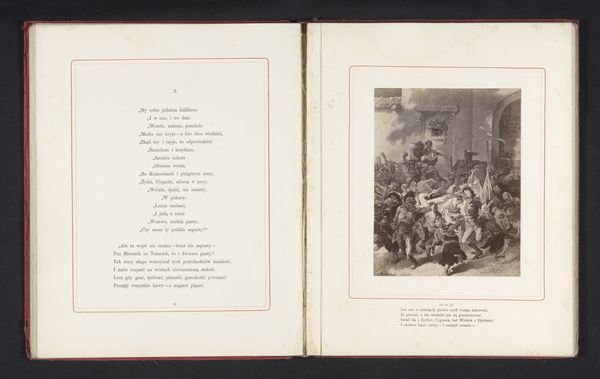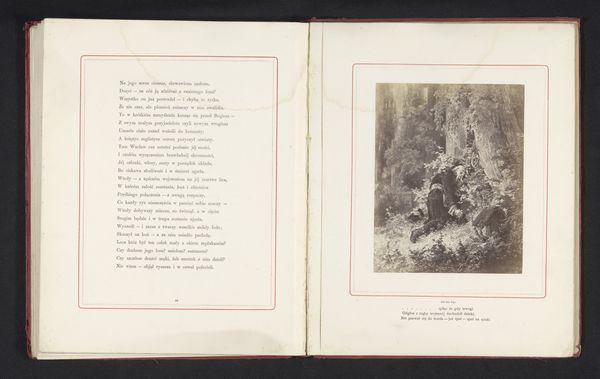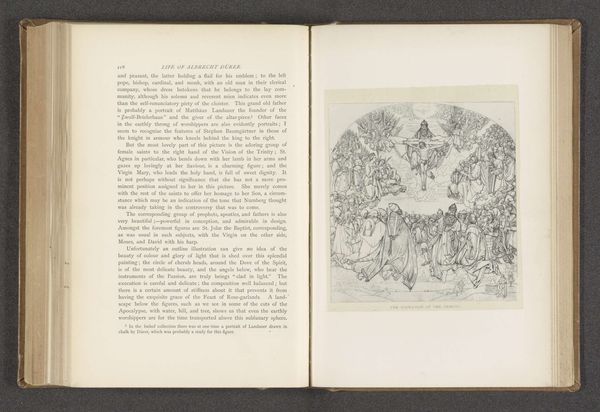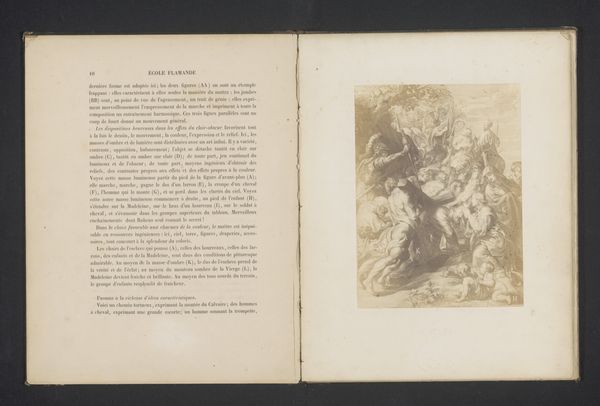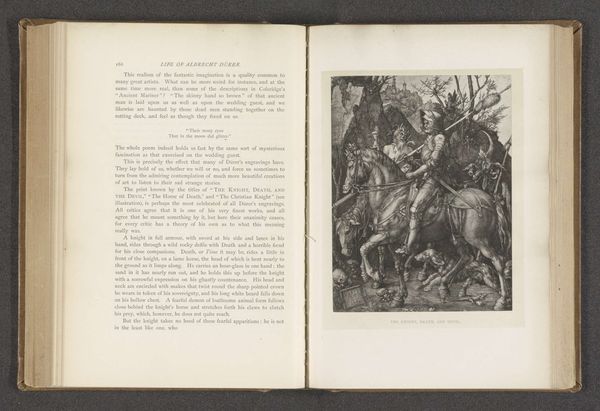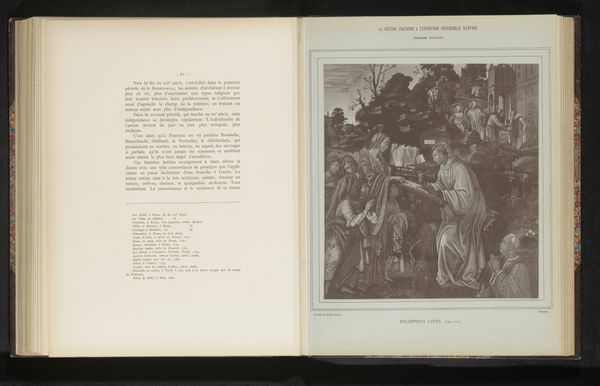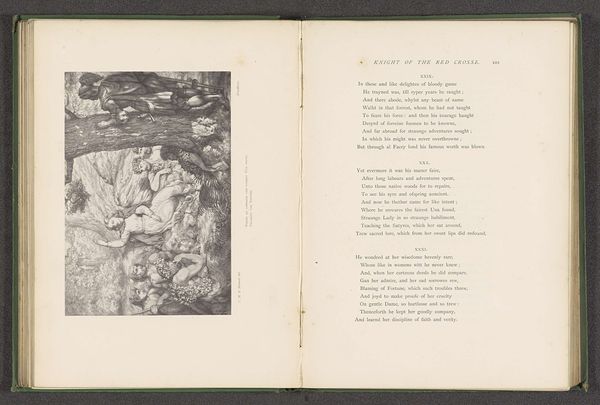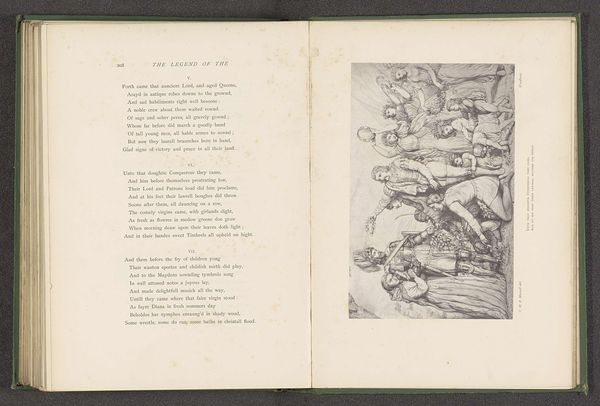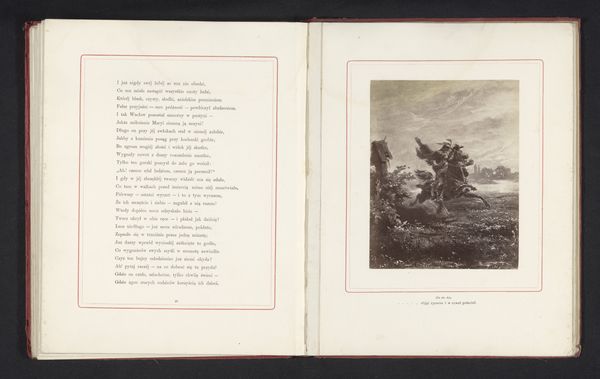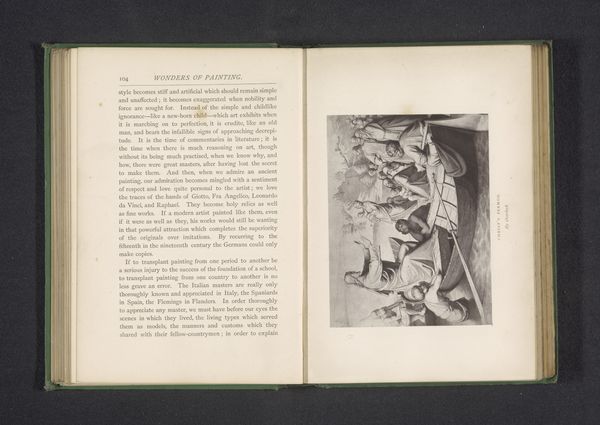
Fotoreproductie van een schilderij voorstellende een slagveld tussen vermoedelijk de Polen en de Tartaren before 1876
0:00
0:00
print, photography
# print
#
photography
#
genre-painting
#
history-painting
Dimensions: height 185 mm, width 147 mm
Copyright: Rijks Museum: Open Domain
Curator: We’re looking at a reproduction of a painting created before 1876, the work of Konrad Brandel. The print is titled, “Fotoreproductie van een schilderij voorstellende een slagveld tussen vermoedelijk de Polen en de Tartaren,” or, “Photographic reproduction of a painting depicting a battlefield between presumably the Poles and the Tartars." Editor: Immediately, I’m struck by the image's dense composition. It feels claustrophobic, packed with figures in chaotic motion, all rendered in grayscale, which enhances the sense of turmoil. Curator: Battle scenes like this had significance in Polish Romantic painting and, by extension, in its cultural institutions and the patriotic sentiments they hoped to instill in the populace. It speaks to the complicated history of Poland at that time. Editor: What stands out is the dynamism, this whirlwind of activity concentrated within the rectangular frame. Brandel uses a shallow depth of field and muted tones, creating a dream-like vision of carnage. Curator: The historical context suggests Brandel reproduced this painting for educational or propagandistic purposes, seeking to remind his contemporaries of Poland's martial past. Note also how prints and photographs democratized images previously restricted to elite audiences, broadening their societal impact. Editor: I find the figures almost indistinguishable, a sea of swords and bodies creating a sense of overwhelming chaos. I think the lack of clear delineation adds to the horror; there’s little focus on heroism. Curator: Indeed. The painting’s dissemination as a photograph further shapes our modern engagement. This is no longer just about commemorating history but the power of photographic reproduction and the layers of historical narrative the combination suggests. Editor: Seeing it now, it feels like looking into the past through a glass darkly—the combination of artistic skill and photographic precision conveying war's brutal realities with compelling impact. The tones create a real depth in what otherwise feels very stylised. Curator: Precisely, and reflecting on our discussion, one can see the piece embodies more than aesthetics; it echoes through time. Editor: I concur; the density invites closer inspection that gives way to deeper meanings.
Comments
No comments
Be the first to comment and join the conversation on the ultimate creative platform.
